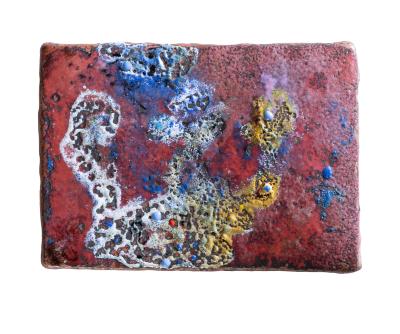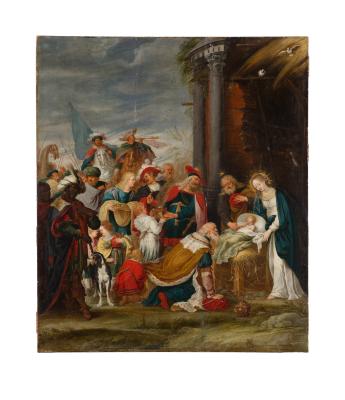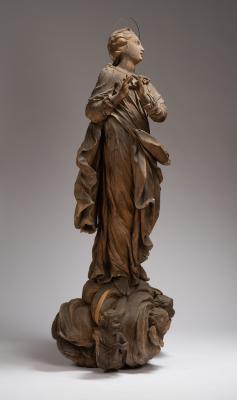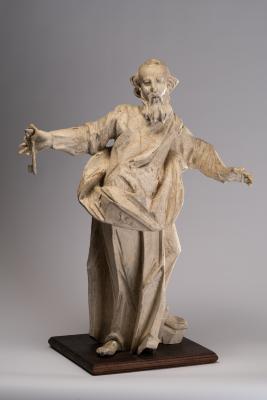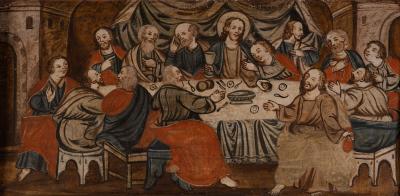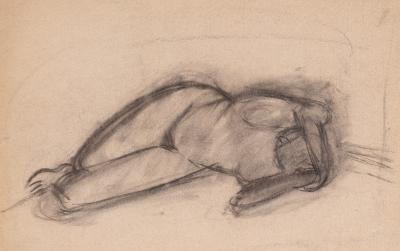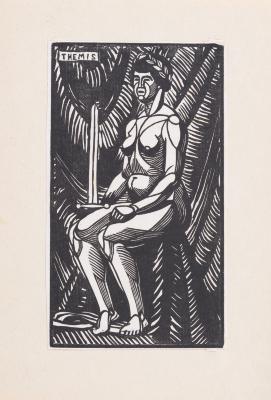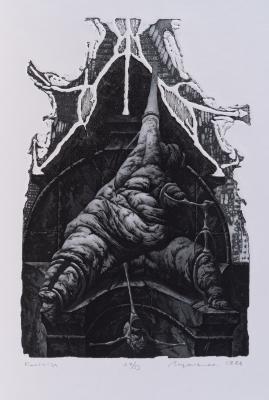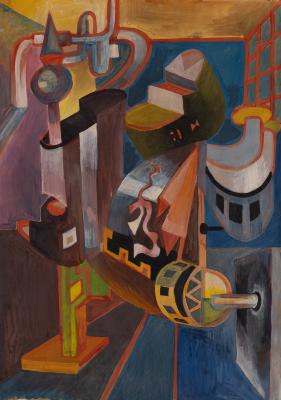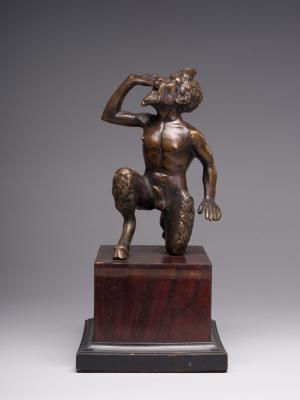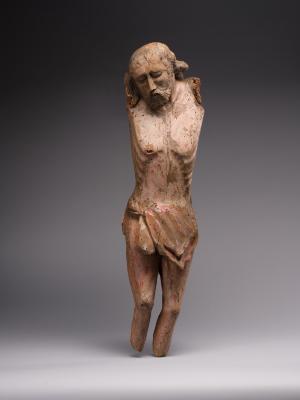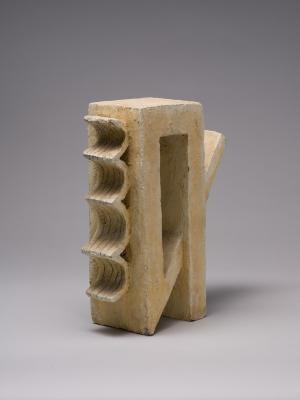The first version of the composition by B. Pinelli was issued in the album Raccolta di Cinquanta Costumi li più interessanti delle città, terre e paesi in provincie diverse del Regno di Napoli (Collection of Fifty Most Interesting Picturesque Costumes from Cities, Towns and Villages of Different Provinces of the Kingdom of Naples) published in Rome in 1814. The album was reissued later, in 1817. The Lviv composition is horizontal in contrast to the above-mentioned engraving in a square frame. In the foreground, a young woman with a basket stands with her back to the viewer, talking to a goatherd sitting on a stone near an old tree. A hornless goat is lying next to him. The woman is dressed in bright national clothing, depicted in sophisticated colours; a dress and skirt are embroidered with gold threads; she has a traditional Neapolitan headscarf on her head. A goatherd is dressed in bright clothes with a wide hat. Both the girl and the boy are wearing ciocie, light boots. The characters are painted with bright watercolours, with prevailing yellow, blue, and red. In the background, on a steep slope above the lake, there is a fragment of a building (it may be the town of Mascioni on the mountain lake Lago di Campotosto, the only large body of water in the province of L’Aquila).
Ciocia (Italian: ciocio, Neapolitan: la chiòchiera) is a traditional wicker footwear of the mountain people of central and southern Italy (Abruzzo, Marche, Basilicata, Terra di Lavoro, Molise and others), which partly resembles Ukrainian bast shoes (lychaky).







